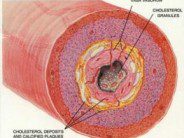The health risks of smoking tobacco are well known. Tobacco smoking increases the risk of heart disease, stroke, cancer, and can lead to the development of emphysema and chronic bronchitis. According to a survey conducted by the National Center for Health Statistics, in 2008 the United States had an estimated 24.8 million men (23.1 percent) and 21.1 million women (18.3 percent) who were active smokers of tobacco. Tobacco is a very addictive substance, and can be harder to quit than heroin or cocaine for heavy lifelong smokers. Smokers who quit often experience increased appetite and weight gain. The average weight gain for a smoker is usually 5-10 pounds but some smokers can gain even more weight. This serves as a hindrance to some smokers in their attempt to quit the unhealthy habit. The average smoker needs to attempt to quit several time before they are successful, and often times an attempt to quit ends in failure.
Researchers, led by Dr. Adrian A. Taylor from the University of Exeter in the United Kingdom, have found that physical activity and exercise can help decrease the cravings and urge to use tobacco for smokers. The results of their study were published online in the journal Addiction. The researchers performed a systematic review of 19 previous clinical trials and performed a meta-analysis of the results. The results showed that moderate exercise was able to cause significant craving reduction immediately following the physical activity.
The authors wrote, “Furthermore, all meta-analyses showed a moderate decrease in cigarette cravings after a short bout of physical activity, which was statistically significant across all meta-analyses. The magnitude of the craving reduction after short bouts of PA is comparable and exceeding the craving reduction associated with [nicotine replacement therapy] and glucose, and this may have practical implications for the use of [physical activity] as a smoking cessation aid”.
The authors concluded, “This is the first study to quantify the acute effects of [physical activity] on cigarette cravings using individual participant data metaanalysis. The effects were large, at a time when participants were experiencing moderate to high cravings following a period of abstinence. This review highlights the potential of a single session of [physical activity] to reduce cravings, especially when cravings are high. However, further analysis exploring heterogeneity among the studies is needed to improve understanding of the effects of acute [physical activity] on cigarette cravings. Investigating the role of patient characteristics, smoking characteristics and aspects of [physical activity] such as type, duration and intensity, as potential moderators on the effects is necessary”.
It is theorized that physical activity and exercise may decrease cravings by serving as a distraction and by elevating the mood of the participants. Despite decreasing the cravings for tobacco, the long term effects of physical activity on successful smoking cessation are not known. Additional studies will need to be performed in order to determine if physical activity and exercise will translate into a greater rate of successful smoking cessation.
Reference:
Haasova M. Warren et al. “The acute effects of physical activity on cigarette cravings: Systmatic review and meta-analysis with individual participant data (IPD)” Addiction 2012 doi: 10.1111/j.1360-0443.2012.04034.x










 DrSamGirgis.com is a blog about medicine, nutrition, health, wellness, and breaking medical news. At DrSamGirgis.com, the goal is to provide a forum for discussion on health and wellness topics and to provide the latest medical research findings and breaking medical news commentary.
DrSamGirgis.com is a blog about medicine, nutrition, health, wellness, and breaking medical news. At DrSamGirgis.com, the goal is to provide a forum for discussion on health and wellness topics and to provide the latest medical research findings and breaking medical news commentary.
{ 0 comments… add one now }